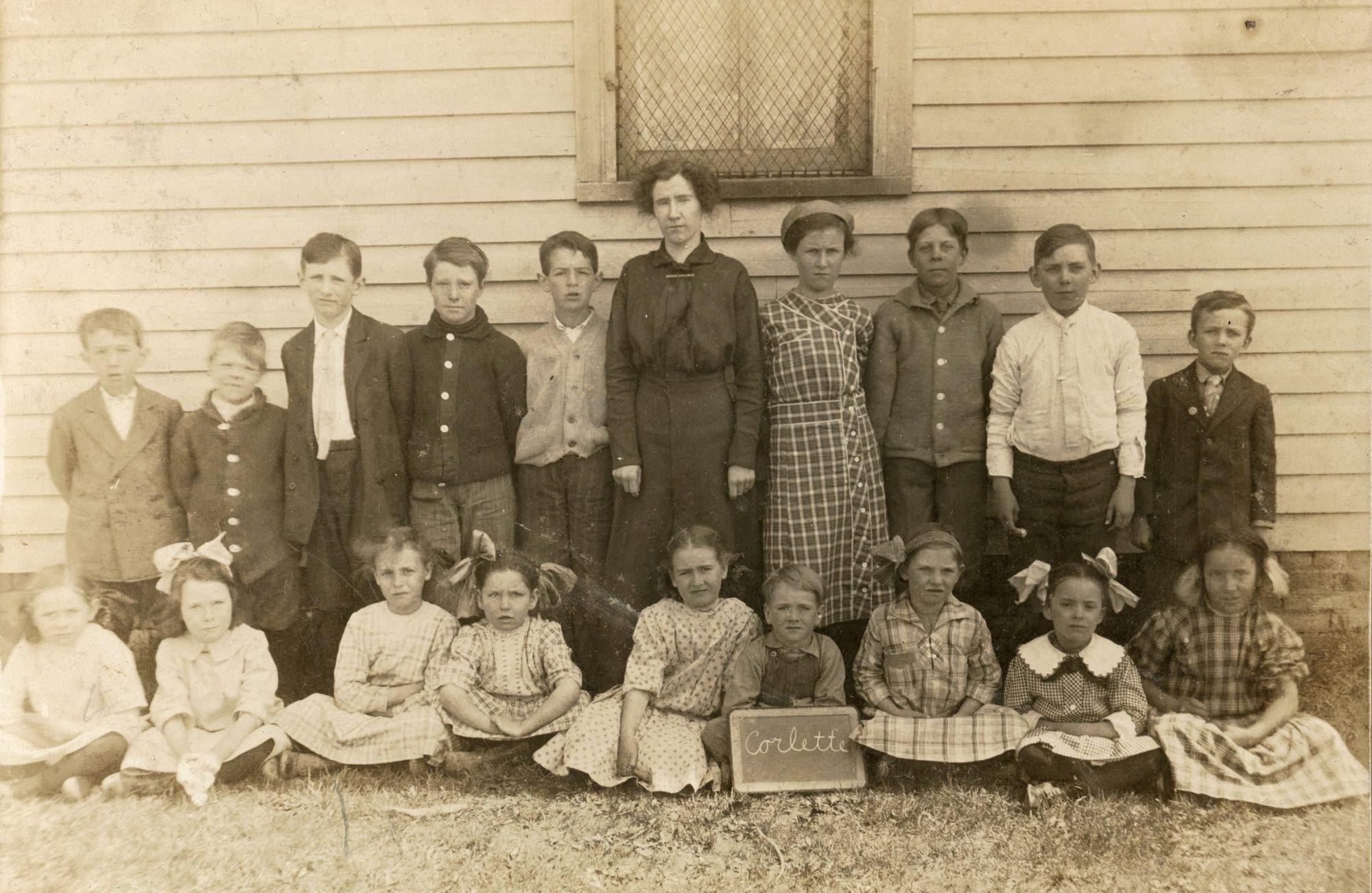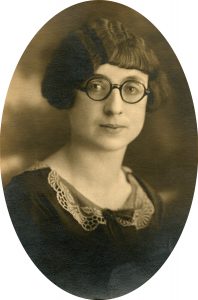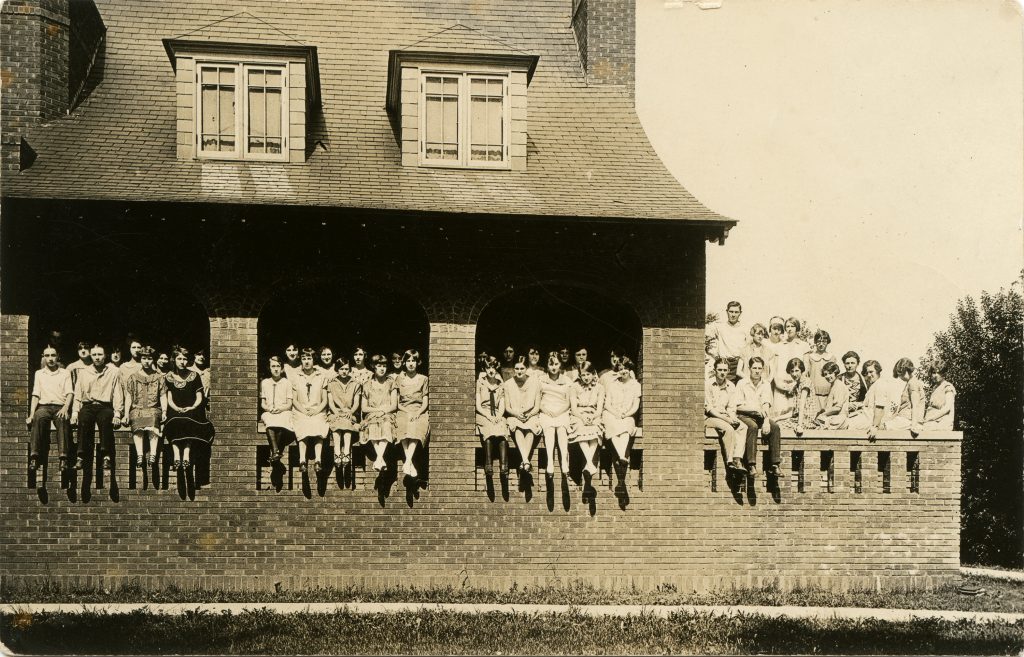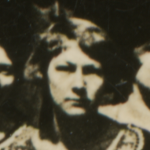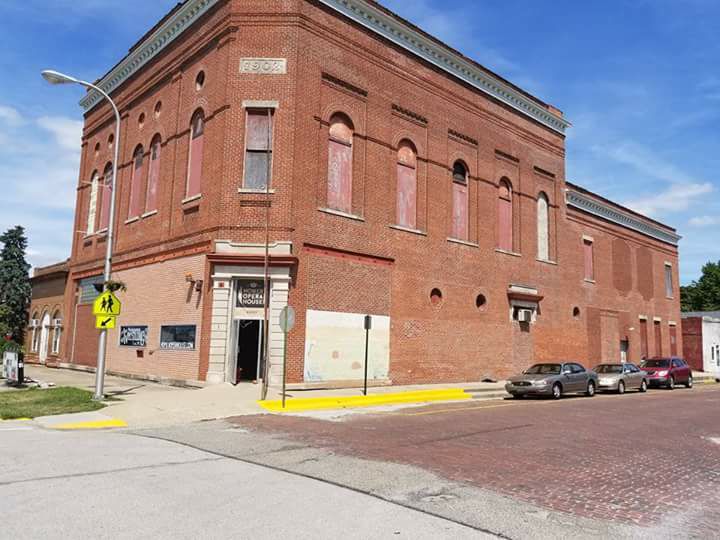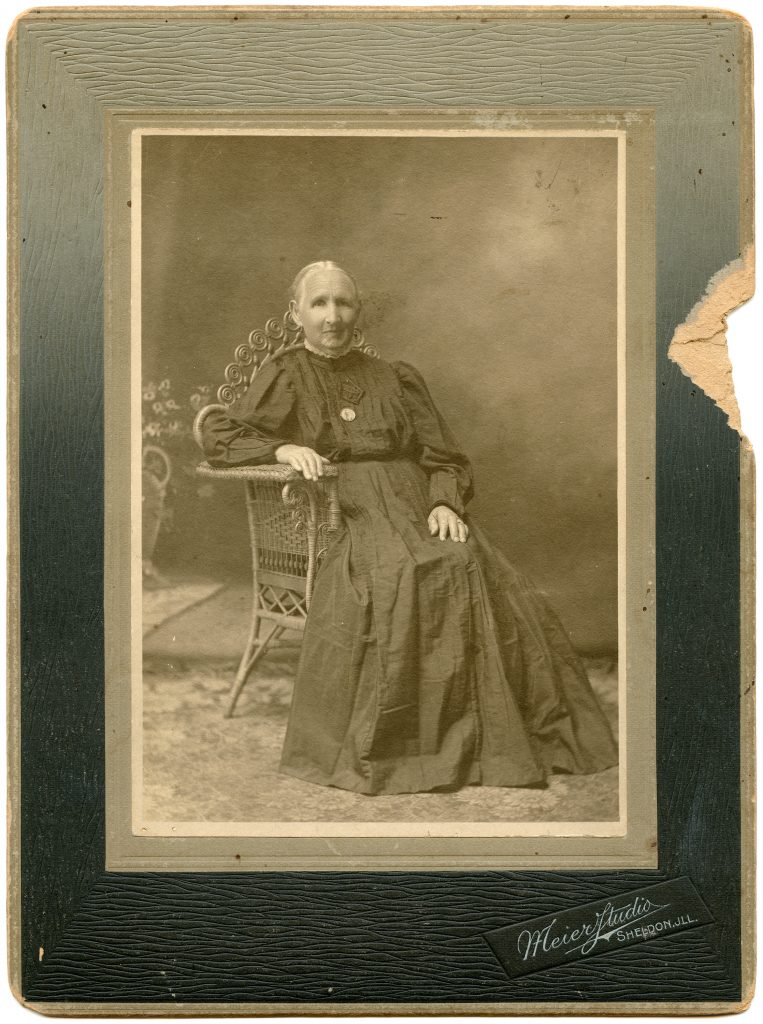
The photo
This matte collodion print shows my 3rd great-grandmother, Nancy Jane Hull McCarty (1832-1908) in about 1905. The photo was taken at Meier Studio in Sheldon, Illinois. I have been unable to find any information on this photographer.
She is seated in a wicker photographer’s chair (a.k.a. posing chair) which has been placed on a floral rug. The same chair appears in other family photos of the time. The backdrop is mostly plain, but a flowering plant is painted on it at one side.
The card mount has a base of the common grey board but has a textured overlay which transitions from grey to black. I suspect that the grey is due to sun fading, but I can’t be sure of it. If it was originally solid black, it might have been chosen for mourning reasons.
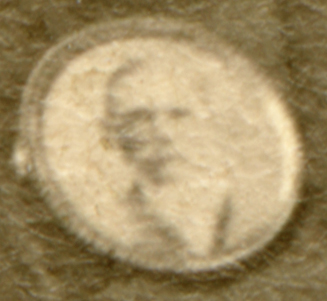
Nancy is wearing a piece of jewelry showing a portrait of her husband, James S. McCarty (1825-1902). I have compared it to the two known photos of James, and it doesn’t appear to be the same.
Nancy’s dress is very dark, possibly black, with a bit of white lace or light fabric trimming her collar. It was expected that a widow would wear mourning clothing and adhere to customs for at least a year after the death of her husband. While this might be considered a mourning gown, many elderly widows didn’t adhere to the standard mourning timeframes and just wore black for the remainders of their lives. So, this photo wasn’t necessarily taken within the year following her husband’s death.
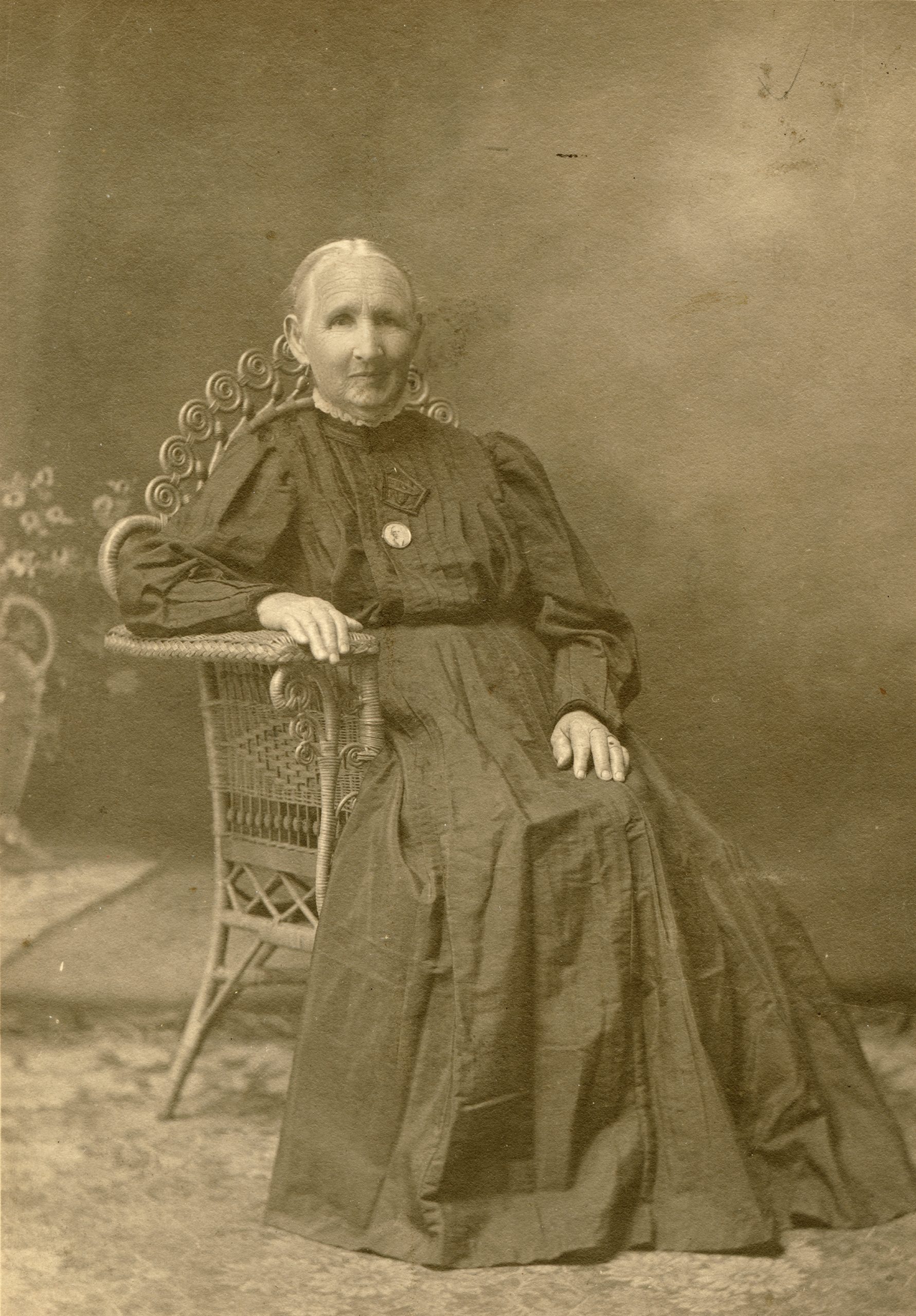
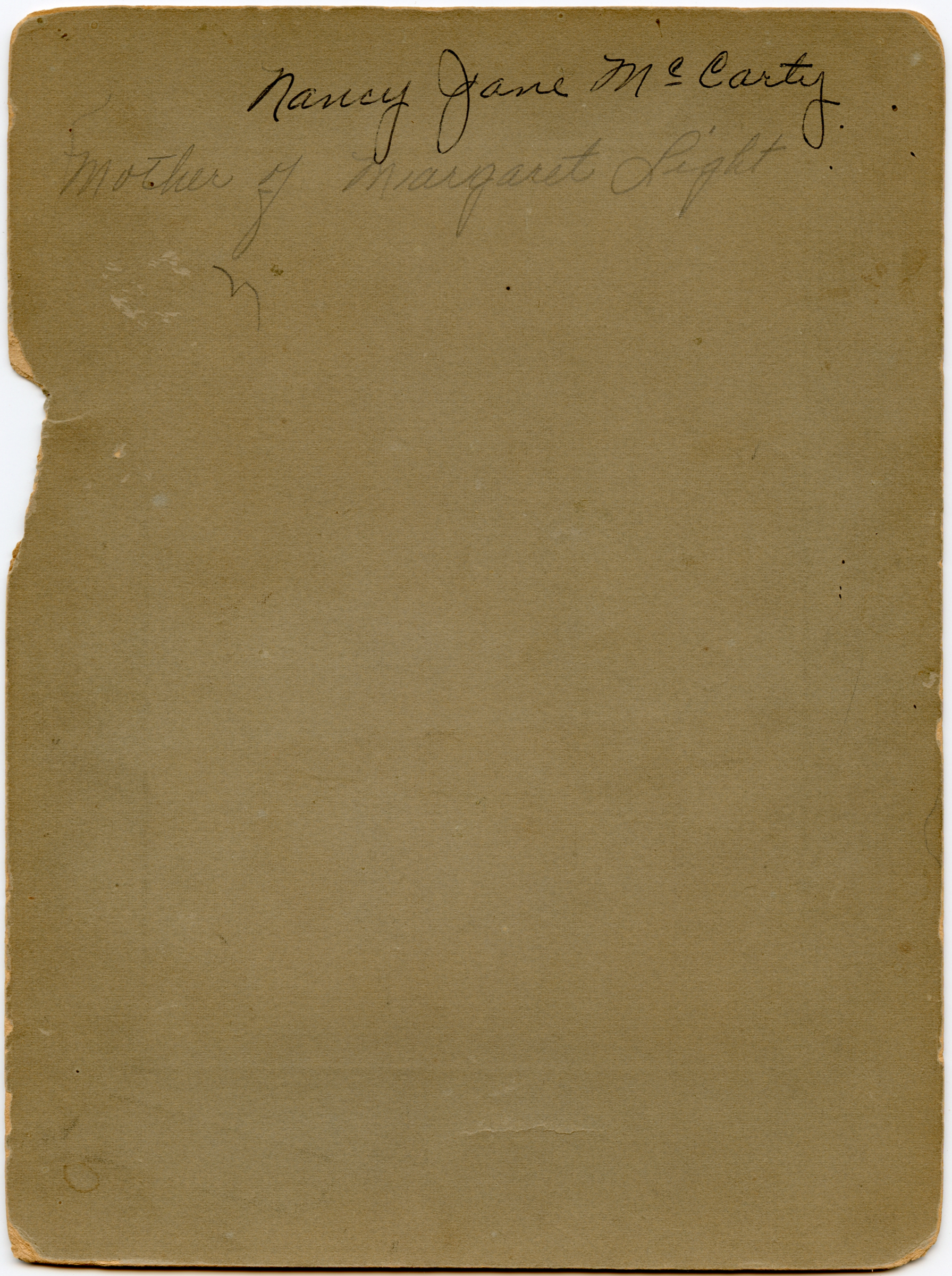
Her life
Nancy Jane Hull was born on Christmas day in 1832 in Hampshire County, (now West) Virginia to William and Rebecca Hager Hull. She married James S. McCarty on the frozen Potomac River on 15 January 1852.
After having their firstborn, William Thomas McCarty (1852-1919) at home in Virginia, the couple moved to Greene County, Ohio where they had six more children. James worked as a farmhand.
At some point between 1833 and 1866, the family moved to Iroquois County, Illinois, settling in Concord Township near Bunkum, which later became the town of Iroquois (Nancy’s father and some siblings moved to a different area of Illinois at an unknown time). Three more children were born in Illinois to bring the final number to ten (known) children born to Nancy and James.
By 1880, the McCartys had moved just across the Indiana state line to Washington Township in Newton County. After James’ death in 1902, Nancy lived with her son Luke in Effner, back in Iroquois County, Illinois.
Late in life, Nancy suffered from several health problems, but was able to keep house until just before her death. Nancy died 16 August 1908 at age seventy-five. She was buried next to her husband at Morris Chapel Cemetery near Donovan, Illinois. She left ten children, thirty-eight grandchildren, and thirteen great-grandchildren to mourn her loss.
